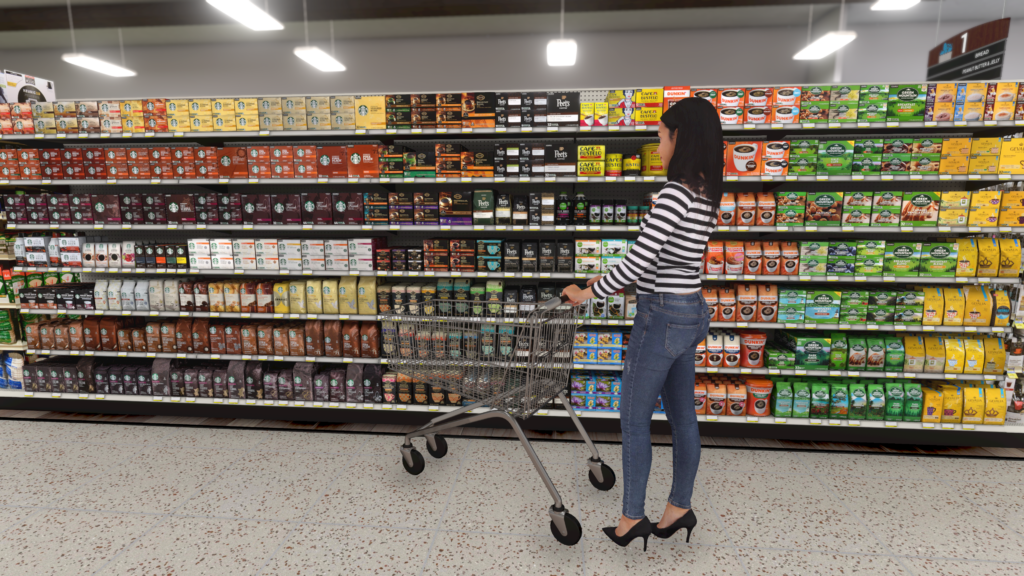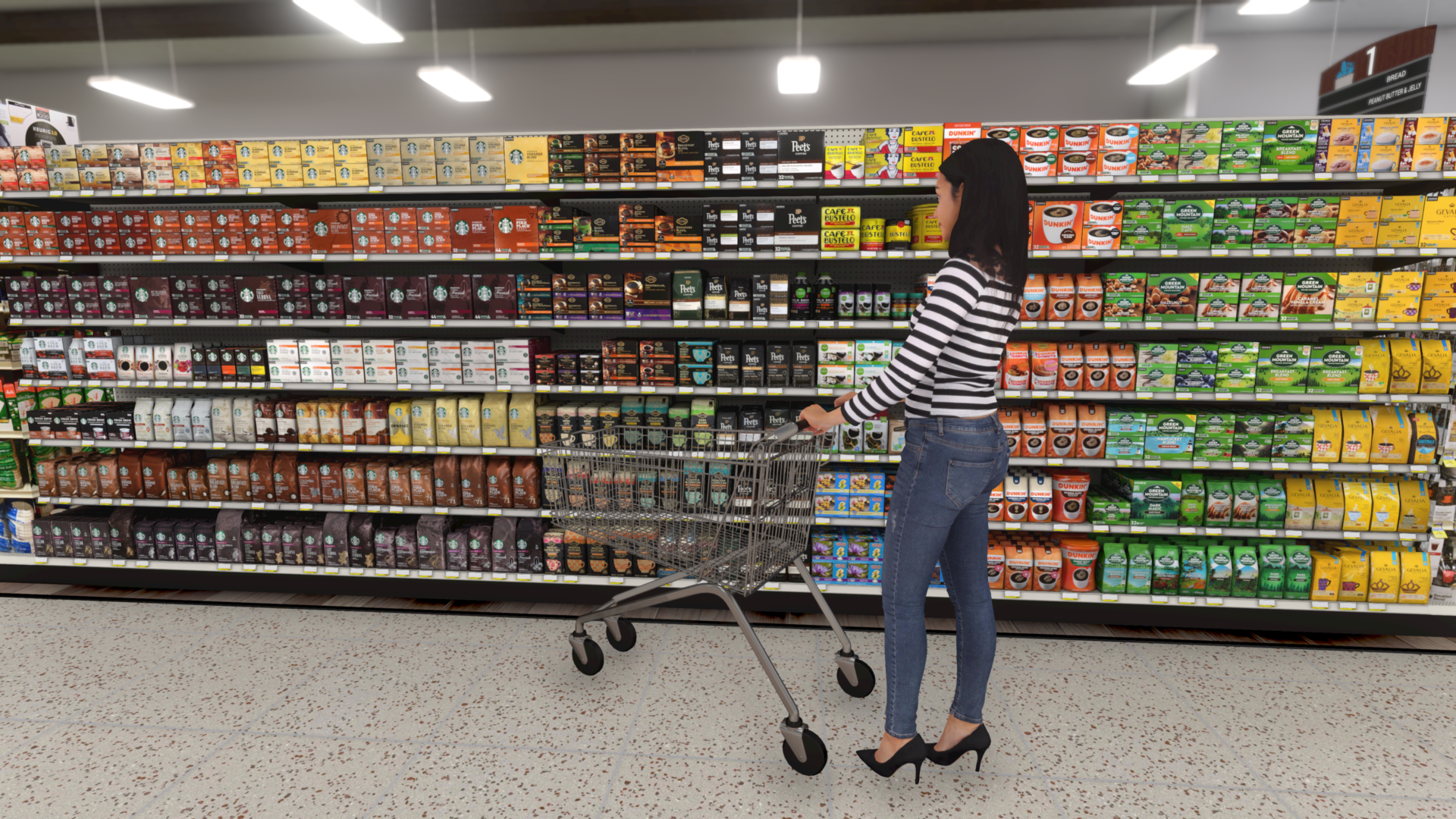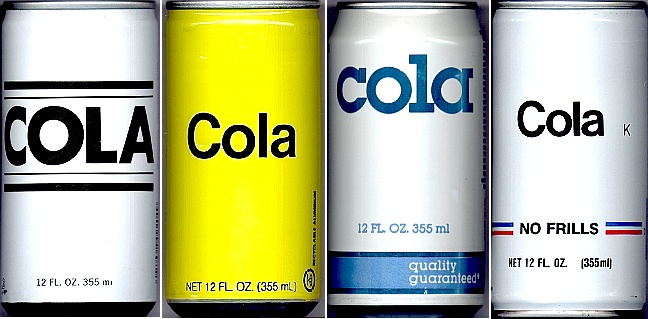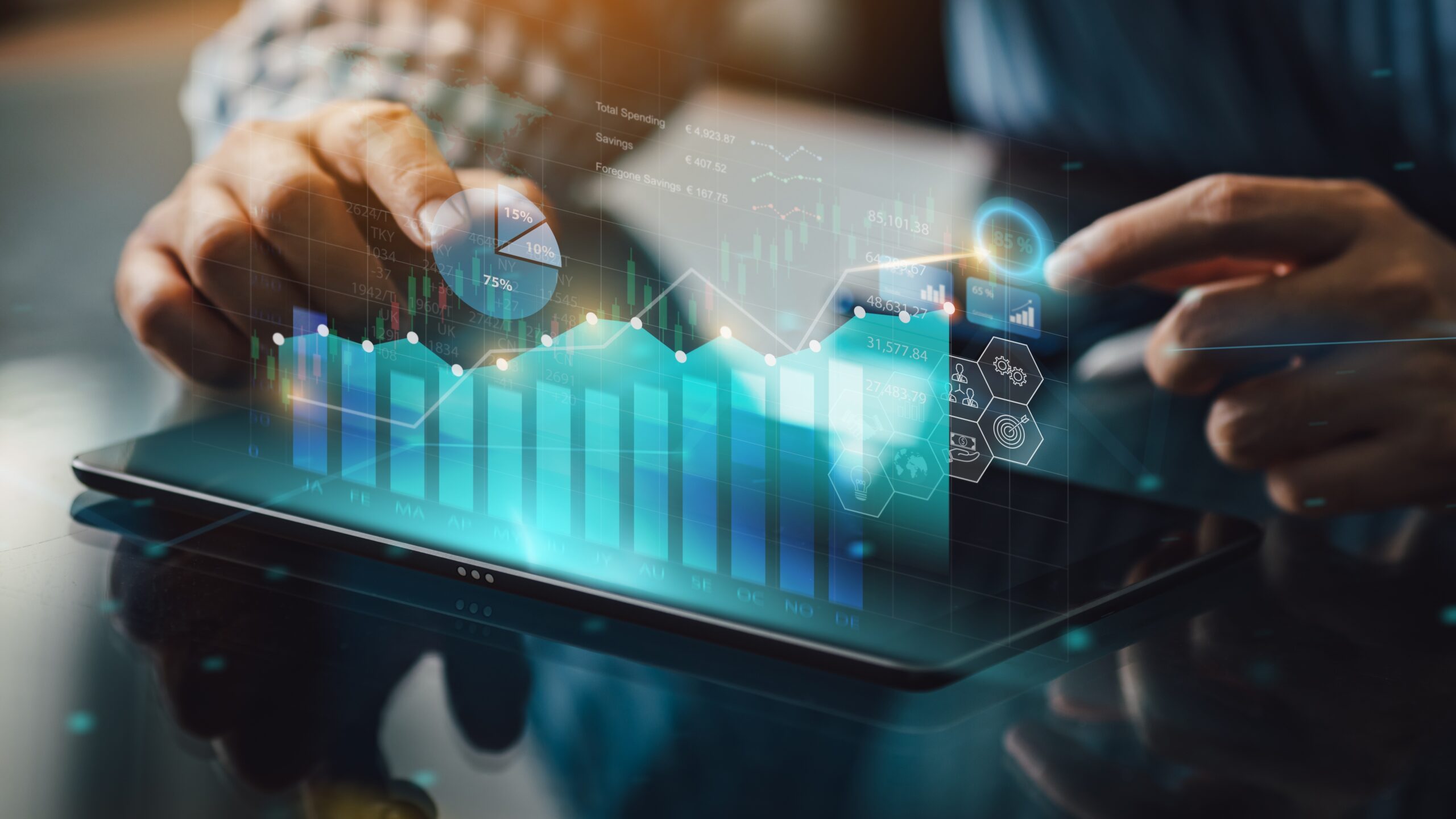For many years, big-name brands maintained a stronghold over private label brands in the retail industry. The majority of consumers were willing to pay more for a Coca-Cola product, for example, than paying less for a generic version. But the past decade presented a rising shift in how consumers thought about their spending habits. More recently, as retail prices continue to rise due to inflation, that shift is rapidly progressing as many families can no longer afford all the brand name products they used to buy in grocery stores–and are instead turning to private label brands. US households are seeing their spending power eroded as the cost of living increases. From the war in Ukraine affecting gas and wheat prices to the drought in California driving up the price of fruits and vegetables, it’s difficult to point to only one factor causing inflation.
What we can say for sure is that retailers feel the squeeze as sales of consumer packaged goods from big brands continue to decline. In order to combat this, they are investing in private label brands as a way to give sales a boost. And this investment is going over well with consumers. In fact, as of January 2022, 80% of US adults have purchased or are willing to purchase a private label product.
Since there is no end in sight to the sharpest rise in commodity prices since the ’70s, it’s time for retailers to find a solution that will work in the long term. And private label goods may be the answer.
What factors are causing price inflation?
To understand the context and scope of the issue, let’s explore the root causes of inflation. There are many reasons why prices are rising, but most were set off by the global COVID-19 pandemic.
Shipping
The pandemic resulted in several supply chain disruptions that drove up the cost of goods. The basis for this was the sudden and sharp increase in demand for certain products, while at the same time, the supply of those goods decreased. This perfect storm resulted in inflationary pressure on a number of fronts.
Shipping costs also increased due to a decrease in the availability of containers, which drove up the price of imported goods. The Global Container Freight Index reported an increase from $1,362 in 2019 to $9,628 for the same container in 2022. That’s a 700% increase in roughly two years’ time.
China is the largest exporter of goods worldwide, so any trading restrictions or tariffs will have a ripple effect on the global economy. From Canada and the US imposing tariffs on Chinese steel and aluminum to small businesses being unable to get their hands on the goods they need, there has been no shortage of tension between China and the West.
The trade war between the US and China also resulted in higher prices for consumers. Both sides placed tariffs on several imported goods, ultimately leading to inflation. The decrease in supply eventually led to a scarcity of certain goods, which drove CPG prices up as well.
Labor
The pandemic also resulted in a decrease in the supply of labor, as many workers who couldn’t work at home were either sick or afraid to come to work. Others were temporarily laid off and decided to enter into different industries. This decrease in labor led to an increase in the cost of goods and services, as businesses had to pay more to get the work done.
A phenomenon known as the “Great Resignation” simultaneously emerged, driven by people leaving their jobs in search of greener pastures. With the rising cost of living and wages stagnating, many workers felt they were no longer valued by their employers. As a result, 48 million people quit their jobs in 2021, leaving many job openings across the country.
This “Great Resignation” has put upward pressure on wages, as businesses are now competing for a smaller pool of workers. In order to attract and retain talent, companies are forced to offer higher salaries and better benefits. This wage increase, in turn, leads to inflationary pressures as labor costs increase and manufacturers have to increase the price of goods to accommodate this change.
The perfect storm
If we couple the effects of the aforementioned factors with the already existing debt issue, we have a recipe for disaster. Relief programs like stimulus checks and unemployment benefits have helped to prop up the economy, but they are not sustainable in the long term.
As the saying goes, “you can’t print your way out of a recession.” The wheels are already in motion, and the consequences are already being felt. The cost of living is on the rise, and inflation is rearing its ugly head. Inflation is a natural by-product of an expanding economy, but when it gets out of control, it can lead to severe problems. When prices increase at a faster rate than wages, people are not able to keep up with their cost of living. In turn, this affects distributors, as people cannot afford higher-priced goods.
What are retailer brands doing as a solution?
While all these compounded issues are causing price inflation, retailers have to be quick on their feet and respond to the problem with creative solutions. The result: in the face of inflation, many retailers are turning to private label brands as a way to combat rising prices.
What is a private label brand?
A private label brand is a brand manufactured to sell products under a retailer’s name. Most shoppers know these brands as generic products or goods. Private label brands have been around for a long time, but they’ve gained popularity recently as a way for retailers to offer cheaper alternatives to branded products.
In the past, private label brands were seen as inferior to branded products. However, that perception has changed in recent years as private label brands have increased in quality. Retailers have started to invest more in their private label brands, and many of them are now comparable to big-name brands in terms of quality. The retailer has the final say in what goes into the product, how it’s made, and how much it costs. This allows them to keep the price down and still offer a high-quality product. In addition, offering affordable products means retailers can still attract the same number of customers and gives them more control over their margins and profits.
The bottom line is that private label brands are a win-win for both retailers and consumers. Retailers can offer high-quality products at a lower price and consumers can save money on their favorite purchases.
Examples of private label brands
It’s easy to purchase a private label brand without even realizing it. Retailers have become quite good at marketing and packaging their private label brand products to look like any other brand.
Here are some examples of popular private label brands:
Aldi: The success of Aldi is one of the biggest driving forces behind trust in private label brands. Discount grocery chains like Aldi, Lidl, and Trader Joe’s have proven that private label products can have a cult-like following, without relying on big brand recognition or in-store marketing. Now, inflation has nudged even more shoppers to discover discount grocery options.
Target’s Brands: Target took a slightly different approach with its private labeling. They initially had Archer Farms and Simply Balanced as their two in-house brands. However, they recently announced that they would be getting rid of Simply Balanced and replacing it with a new brand called Good & Gather. Target now has over 45 brands selling private-label products in their stores. Clothing, pet products, and home improvement are just some of the categories they sell under their private label brands.
Amazon‘s Basics: Private label brands aren’t restricted to physical stores, they have their place in e-commerce as well. Amazon has also gotten in on the action with its own private label brand, AmazonBasics. This product line includes everything from batteries to bedding. One of the benefits of Amazon’s private label products is that they are often eligible for free two-day shipping for Prime members. While they are currently mostly known for electronics, we can imagine that Amazon will eventually branch out into other categories with their private label products.
Costco‘s Kirkland Signature: Costco is another retailer that sells a variety of private label products under their Kirkland Signature brand. As a retailer that already offers low prices, they can sell their Kirkland Signature products even cheaper than the branded versions. It’s an excellent way for them to attract customers who are looking for a good deal. Some of the categories they sell under their private label brand include food, alcohol, and home goods.
Clearly, private label brands are everywhere. The next time you’re at the store, look around and see if you can spot any private-label products.
The rise of private label brands
In the past year, we’ve seen significant growth in the private label market. More and more retailers are investing in their private label brands to combat inflationary pressures. Customers are embracing this change, with 87% of them opting for a private label product over a branded one when given a choice.
The year-over-year growth of private label brands has been impressive, to say the least. In April 2022, sales of private label products were at 10.7%, a staggering difference from the 3.8% YOY growth recorded 52 weeks prior. This rapid growth can be attributed to several factors, perhaps the most important being the continued rise in living costs which has created conditions where families need to save on grocery spending.
This sharp increase can also be attributed to the quality of private label brands. What started out as a way for retailers to offer cheaper alternatives to branded products has now become a way for them to offer high-quality products at a lower price. In fact, private label brands are often seen as being on par with branded products in terms of quality.
Notably, Walmart and Target are known for bringing premium designers on board in an effort to create private label brands that are stylish and trendy. This strategy has successfully attracted a wider range of shoppers, as private label brands are no longer seen as cheap and inferior.
The rise of private label brands is also being driven by the increased focus on sustainability. Consumers are becoming more conscious of the environmental impact of the products they buy, and they’re looking for sustainable alternatives. Retailers are responding to this demand by creating locally sourced and sustainable private-label products.
What are the benefits of investing in private label brands?
While private label brands seem to be doing wonders for customers, it’s important to remember that they’re also good for retailers. In fact, a number of benefits come with investing in private label brands.
Private label brands give retailers more control over pricing
The most obvious benefit is the increased margin of selling your own products. When you sell a branded product, you have to give the brand a cut of the profits, but retailers get a larger cut for their own brand. This increased margin can be reinvested into the business or used to lower prices and attract even more customers.
In essence, this increased profit margin also gives retailers more control over pricing. They’re no longer at the mercy of the brands and can adjust prices according to their needs. This is a great way to stay competitive and attract price-conscious shoppers.
Private labels build loyalty
Another benefit of private label brands is that they help to create loyalty among customers. When customers find a private label product they like, they’re more likely to stick with it and become loyal to the brand. They know that they can trust the quality of the product, and they don’t have to worry about it being discontinued.
This loyalty extends to the long term as well. Once customers become loyal to a private label brand, they’re less likely to switch to a competitor’s brand, even if the price is lower. This loyalty can be extremely valuable to a retailer, as it helps create a stable customer base that can be relied on for years. As the home brand becomes more and more popular, retailers are able to create a stronger connection with their customers.
Retailers keep sales up by investing in their own brands
In a climate of rising retail prices, private label brands offer a way for their retail sales up. As branded products become more expensive, many customers are forced to go without their favorite products. The result is a smaller basket size and fewer sales for the retailer.
Private label brands offer a way for retailers to keep their sales up by providing low-cost alternatives to branded products. It helps keep customers happy but also helps to boost the retailer’s bottom line. And in today’s competitive retail environment, that’s more important than ever.
Including private label brands may help overall category sales
Not only do private label brands help to keep overall sales up, but they may also help to increase overall category sales. This is because shoppers looking for a particular product are more likely to buy within the same product category if they see a private label option they like.
For example, let’s say that a shopper is looking for a new shampoo. If they see that the retailer has a private label shampoo that they like, they’re more likely to buy other private label products from the personal care category, such as conditioner, body wash, and soap. This effect is especially pronounced in categories where shoppers are looking for value.

How are retailers testing these solutions?
As with any new venture, retailers must test their private label products before launching them. The last thing they want is to invest in a product that doesn’t perform well. There are a number of ways that retailers can test their private label products. One way is to use VR software to know if further investment in a private label brand is warranted.
VR, or virtual reality, is a computer-generated simulation of an environment that allows users to interact with it as if it were real. It’s often used for gaming and entertainment, but stores also use it for retail merchandising by creating a digital twin of their real in-store setup.
Some ways to use VR for retail testing purposes include:
Evaluate the impact of having multiple private labels
Stores can use VR simulations to test how customers react to having multiple private label brands. As mentioned above, companies like Target have different tiers of private label brands (organic, economy, premium). Knowing which combination of private label brands will work best for a particular store can be difficult.
Should a store focus on a few high-quality brands? Or is it better to have a large variety of lower-priced products? What’s the ideal mix? It depends on many factors, like the target customer, the store’s reputation, and the product in question. For example, consumers are less likely to think twice about buying a cheaper bag of chips from a store like Walmart than they would be about buying a cheaper pair of jeans.
VR simulations can help stores to test different combinations of private label brands and see how customers react. This testing can help stores find the perfect mix of private label brands that will appeal to their varied customer base and help boost sales.
Test different shelf arrangements
Another way stores can use VR simulations is to test different shelf arrangements. By having test subjects shop in a virtual store, retailers can see how they react to other shelf arrangements. This type of testing, also called A/B testing, can be extremely valuable in helping retailers to find the perfect shelf arrangement for their products.
A/B testing is a type of experimentation where two or more product variants are tested against each other to see which one performs better. Does having a display of private-label products at the front of the store increase sales? Does having an end-cap display of private label products help to boost awareness? These are the types of questions that retailers can answer with A/B testing.
Instead of changing the shelf arrangement in their actual store and risking a decline in sales, stores can use VR simulations to test different arrangements. This type of testing is much less expensive and time-consuming than traditional A/B testing, and it can help retailers to find the optimal shelf arrangement for their products.
Do backward testing for mainstream brands based on how private label products are doing
Since private label brands are in direct competition with mainstream brands, retailers can do backward testing for mainstream brands. This type of testing can help retailers see what steps mainstream brands need to take to beat private label brands.
There are several ways that stores can do backward testing for mainstream brands. One way is to use VR simulations to create a virtual store where shoppers can purchase both private label and mainstream brands. This type of testing can help stores see how shoppers react to the different products and price points.
Another way to do backward testing is to use data analytics. Data analytics is the process of analyzing data in order to draw conclusions from it. Retailers can use data analytics to see how many shoppers purchase private label brands and what steps need to be taken to ensure that mainstream brands are still competitive.
Test out packaging changes for private label brands
Visuals are extremely important when it comes to retail. Packaging is one of the first things that shoppers notice about a product, so retailers need to get it right. Stores can use VR simulations to test different packaging changes for private label brands. This testing can help stores find the best packaging for their products.
Instead of printing out new packaging and doing a physical test, retailers can save time and money by testing out the virtual version first. They can test various aspects of the packaging, such as size, design, and even color. This strategy is much more efficient and can help stores to save invaluable resources. They simply need to upload a 3D model of their product and send test subjects into their virtual store.
After the testing is complete, retailers can submit a short questionnaire to their test subjects. This questionnaire can help stores to gather valuable feedback about the packaging. Based on the input, retailers can make changes to their packaging and then test it again. This process can be repeated until the perfect packaging is found.
Lifestyle connection vs. affordable option
Another question that retailers need to answer is whether private label brands should be seen as a lifestyle connection or an affordable option. A lifestyle connection is a brand that shoppers feel aligned with based on their values and beliefs. An affordable option is a brand that shoppers think is a good value for the price.
This is an essential question for retailers to answer because it will help them to determine how to market their private label brands. Using VR simulations, retailers can put test subjects into different virtual stores and see which type of store results in more sales for private label brands. Companies can design each store to look and feel different, with different kinds of products and pricing.
What happens when you introduce an existing private label brand into a new category?
Finally, retailers need to answer the question of what happens when they introduce an existing private label brand into a new category. For example, if a store has a private label coffee brand, what would happen if they added that same brand into the tea category?
The answer might lead to the retailer expanding their store brand into new categories. They can use VR simulations to test different scenarios and see which results in the most sales for their private label brand.
Testing is an integral part of any retail strategy and is vital for private label brands. Retailers can use VR simulations to test different methods and see which ones work best for their stores. With the right strategy in place, retailers can ensure that their private label brands are thriving.
In Summary
We are in the throes of a retail price inflation crisis. Families are struggling to keep up with the rising food costs and household items. Fortunately, private label brands are a smart investment for retailers to maintain sales and grow their businesses. With a possible recession in sight, it is more important than ever for retailers to accommodate their customers by offering an affordable alternative to big brand-name products.
As private brands continue to take center stage retailers will need to use VR simulations to test out different packaging, store setups, and marketing strategies for private label brands. InContext Solutions allows retailers to test the waters on strategy and see how private label brands would perform before making any deep investments. This could be a massive key in differentiating your store from the rest and bringing in more sales. Who knows? Maybe your private label brands can become the next big thing.
Contact us today to learn more about how you can use virtual reality simulations for your business.





